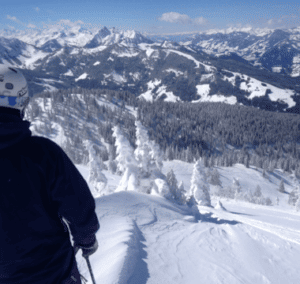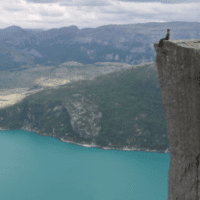
Altitude induced headache occurs in nearly 50% of people at heights over 10,000 feet. The top of Vail Mountain is over 11,500 feet. Aspen’s summit is 12,510 feet Telluride is over 12,255 feet. In all of these areas, most of the skiing is done above 10,000 feet.
Because the lungs’ efficiency in supplying oxygen to the body declines with age in all individuals, oxygen levels in the blood may decrease even further with advancing age in those who reside at high altitudes. Since migraine occurs more commonly when the blood level of oxygen falls, this might explain why headaches seem to increase with age in those who live at higher altitudes.
Headache is the most prominent symptom of AMS and may be accompanied by other symptoms including sleep disturbances, loss of appetite, nausea, dizziness, fatigue, and weakness.
Acute Mountain Sickness headaches
- AMS headache is usually intense, throbbing and is either generalized or in the forehead.
- It develops within six hours to four days of arrival at high altitude and can last for up to five days.
- The headache often worsens with exertion, coughing, straining or lying flat.
- Facial flushing, eye redness, and sensitivity to light may accompany headache.
Fortunately, these headaches generally go away after descent to sea level – either real or simulated such as in an oxygenated room.
Swelling of blood vessels has been considered as a potential cause, some experts feel that the brain swells with increased pressure within the head.
Headache Prevention
There are several tricks to avoiding or limiting the discomfort of adjusting to high altitude for those who are susceptible:
- Hydration – Avoid dehydration by drinking five, eight-ounce glasses of water prior to reaching a higher altitude and while at that altitude.
- Gradual Ascent – If possible, travel to a high altitude should be gradual with rest or minimal activity days to allow your body time to adjust to small, gradual decreases in the amount of oxygen in the air and in your blood.
- Don’t Exert – If skiing, hiking, cycling and climbing can be deferred it will lessen the chances of becoming altitude sick.
- Sleep Low or in an Oxygenated Room – Sleep at lower elevations than you play. If you are hiking or skiing at altitudes above 8,500 feet, say in accommodations as low as practicable. Either in real or simulated altitude.
Credits:
David Dodick, MD, FAHS, FRCP(C), FACP,
Associate Professor of Neurology, Mayo Clinic, Scottsdale, AZ
Peter Hackett, MD
Clinical Professor of Emergency Medicine, University of Colorado Denver School of Medicine
Director, Institute for Altitude Medicine, Telluride
Clinical Director, Altitude Research Center, University of Colorado Denver School of Medicine






